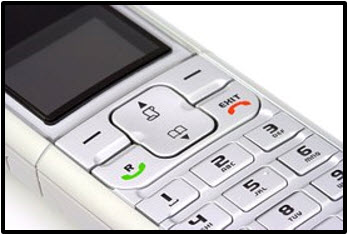Updated October 2022
The Provincial Court of BC increased its capacity to hold some family, child protection, and small claims hearings, or parts of them, by telephone or video conference during the COVID pandemic. The Court has continued to offer this option, when it is appropriate for the parties involved and their case. (See NP 28 for the default methods of attending various types of proceedings and any options available.)
The Court has issued guidelines for people taking part in telephone or video hearings, and this eNews explains some of the procedures a judge may use in these hearings.
Technology
We are now holding urgent hearings by telephone, but we are working on being able to hold video hearings as well, using Microsoft Teams. Once we have that capability and until in-person hearings can resume, the judge will decide whether to conduct your urgent hearing:
- by telephone
- using Microsoft Teams, an online platform for an audio hearing (sound only)
- using Microsoft Teams for a video hearing (sound and video images)
In this article, we’ll use the term “virtual” to refer to a hearing held in any of these ways.

The Court's NP 21 Virtual Proceedings and Remote Attendance in the Provincial Court contains advice on how to use your telephone for a hearing. It also contains a step-by-step guide to connecting and using Microsoft Teams (see Appendix “A”), for use once we begin conducting hearings this way.
Conduct expected
Everyone taking part in a telephone or video hearing should read the Court's NP 21 Virtual Proceedings and Remote Attendance in the Provincial Court. It contains advice on etiquette and guidelines for taking part in a virtual hearing.
Evidence
The evidence a judge will consider in a virtual hearing will consist of any affidavits (written statements that are sworn or affirmed to be true) and other documents that have been filed (sent to the court), provided the judge considers them relevant to the issues in the hearing.

If you have provided an affidavit that has not been sworn or affirmed, the judge will probably ask you to swear or affirm that it is true during the hearing.
In some cases the judge will permit spoken testimony to be given during a virtual hearing. That means a party or witness will take an oath or affirm to tell the truth and then talk about relevant facts. They may be questioned by their lawyer if they have one, the judge, and/or by the other party or their lawyer.
Procedure
When one or both parties are representing themselves, the judge may adjust traditional courtroom procedures to meet the needs of the people taking part and the limitations imposed by the telephone or video format.
If both parties have lawyers, the procedure may be more like a courtroom hearing. See these articles on family and small claims hearings for information on traditional courtroom procedures and how they are sometimes modified:
Whatever procedure is used, the hearing will have a structure to ensure it is fair, complete and orderly. The judge needs to get all the important information from both parties in a logical way.
A telephone or video hearing may include some or all of these steps. The judge may:
- ask everyone to give their name, title (e.g. “Mr./Ms./Mx./Counsel Jones”) and pronouns to be used in the proceeding if people have not provided that information. (See NP 24 Forms of Address for Parties and Lawyers)
- ask if anyone other than the parties and their lawyers is present or listening (In a family court matter, children should not be able to hear any part of a virtual hearing.)
- confirm that no one is recording the hearing (You are not permitted to audio- or video-record any portion of a telephone hearing. The BC Courts’ Policy on the Use of Electronic Devices sets out penalties for recording, including prosecution. If you need a transcript of a hearing, it is possible to order one from the transcription service for your court registry.)
- explain the procedure they intend to use and explain the order in which the parties or their lawyers will speak
- impose time limits to ensure everyone has a chance to be heard during the time available
- tell you which written materials they have received and will be considering (If the judge doesn’t mention this, you may ask.)
- if anyone has filed an affidavit that has not been sworn or affirmed to be true, ask them to swear or affirm that it is true
- if anyone will be testifying, ask them to swear or affirm that their evidence will be true, or ask the court clerk to have them swear or affirm
- ask questions during the hearing to help them understand each party’s case
- state their decision and explain it at the end of the hearing (In some cases, a judge may need more time to consider their decision. If so, they will tell you how you will receive their decision and reasons.)
Whatever procedure is used, each party will have a chance to speak, say what they’re asking for, and explain why. If there are important questions you think the other party should be asked, tell the judge. Depending on the circumstances, the judge may not permit the parties to question each other, but you can ask the judge to ask the other party important questions.
Please check the date an eNews article was posted. We do our best to keep our website up to date, but older articles may not reflect current information. eNews articles provide general information only and should not be used as authority in court proceedings or as a substitute for legal advice.

